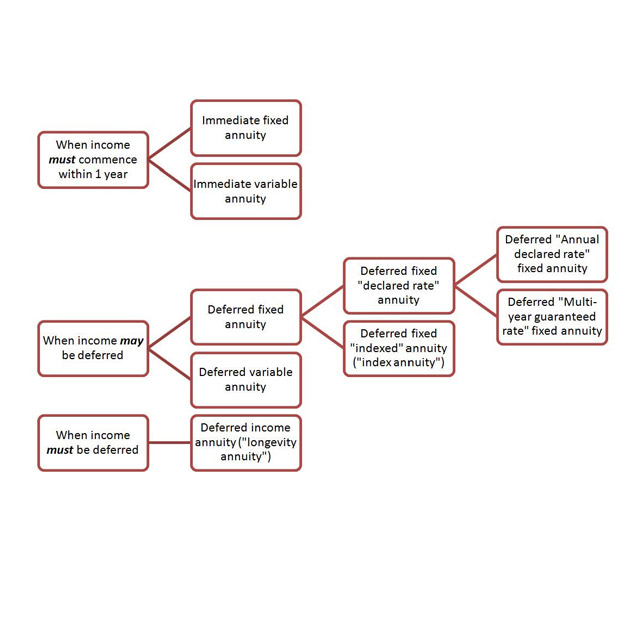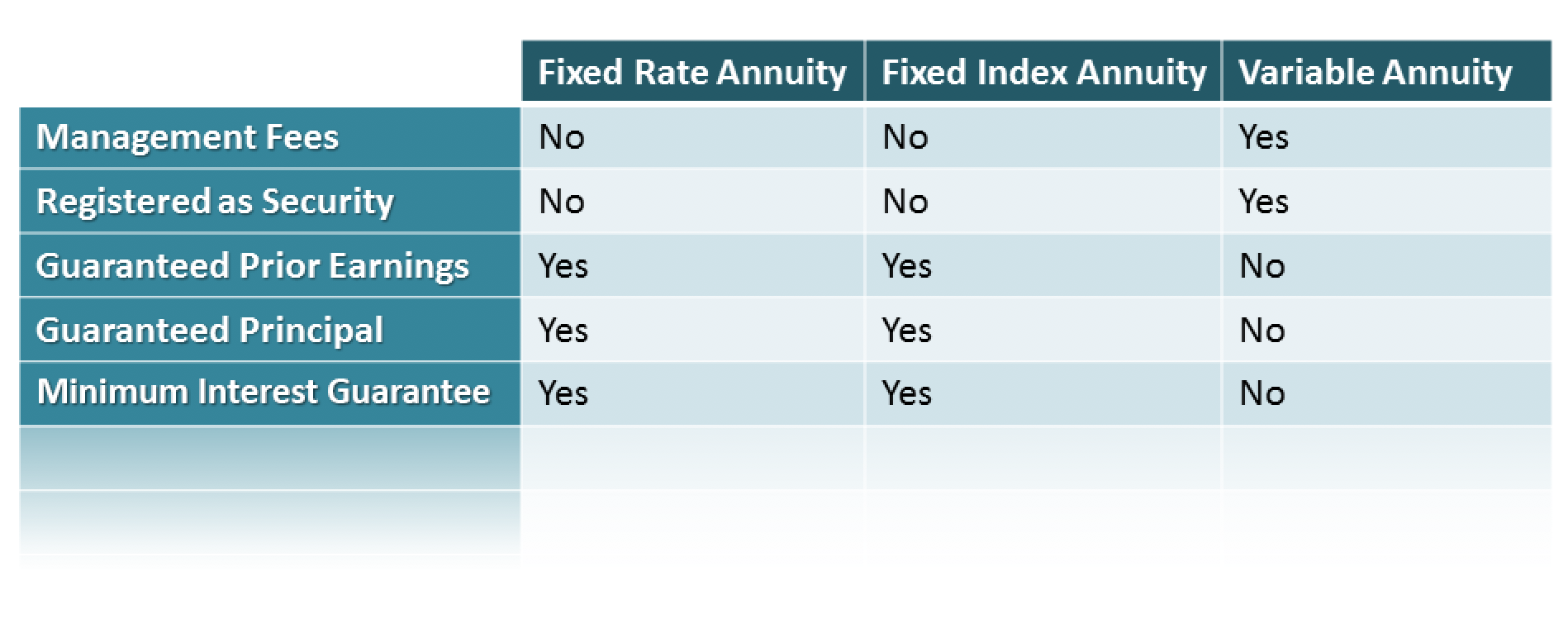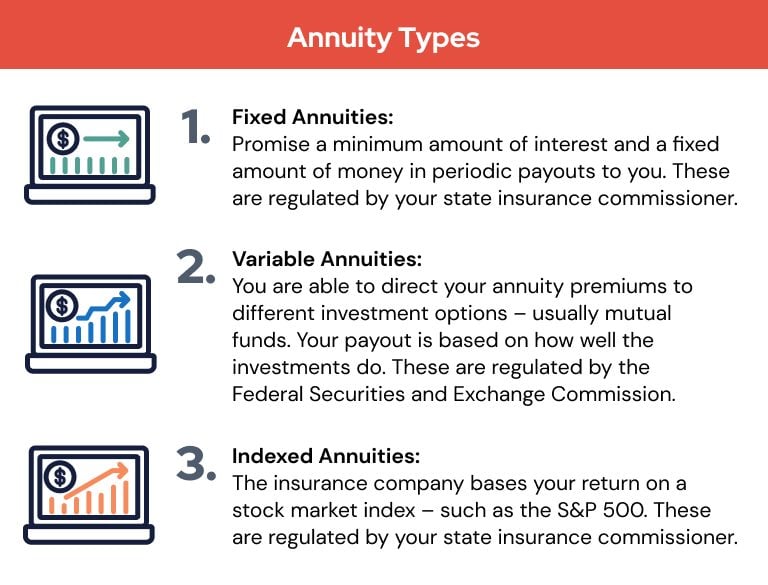All Categories
Featured
Table of Contents
Simply as with a taken care of annuity, the owner of a variable annuity pays an insurance provider a lump sum or series of repayments for the promise of a series of future settlements in return. As pointed out above, while a taken care of annuity grows at an assured, constant price, a variable annuity grows at a variable price that depends upon the performance of the underlying financial investments, called sub-accounts.

Throughout the accumulation phase, properties invested in variable annuity sub-accounts expand on a tax-deferred basis and are tired only when the agreement proprietor withdraws those revenues from the account. After the buildup stage comes the revenue stage. Over time, variable annuity properties should theoretically boost in worth up until the contract proprietor chooses she or he would certainly like to begin taking out cash from the account.
The most substantial problem that variable annuities usually existing is high price. Variable annuities have several layers of costs and expenditures that can, in accumulation, produce a drag of up to 3-4% of the contract's worth each year.
Breaking Down Your Investment Choices Everything You Need to Know About Deferred Annuity Vs Variable Annuity Defining the Right Financial Strategy Benefits of Choosing the Right Financial Plan Why Choosing the Right Financial Strategy Is Worth Considering Fixed Income Annuity Vs Variable Annuity: Simplified Key Differences Between Annuities Fixed Vs Variable Understanding the Risks of Long-Term Investments Who Should Consider Annuities Variable Vs Fixed? Tips for Choosing the Best Investment Strategy FAQs About Planning Your Financial Future Common Mistakes to Avoid When Choosing Fixed Annuity Vs Variable Annuity Financial Planning Simplified: Understanding Variable Annuity Vs Fixed Annuity A Beginner’s Guide to Smart Investment Decisions A Closer Look at Fixed Annuity Vs Variable Annuity
M&E cost costs are computed as a percent of the contract value Annuity companies hand down recordkeeping and various other management prices to the contract proprietor. This can be in the type of a flat annual fee or a portion of the contract worth. Administrative charges might be included as component of the M&E risk fee or might be analyzed individually.
These costs can range from 0.1% for passive funds to 1.5% or even more for proactively managed funds. Annuity agreements can be customized in a variety of ways to offer the certain needs of the agreement proprietor. Some usual variable annuity cyclists consist of guaranteed minimum accumulation advantage (GMAB), ensured minimum withdrawal benefit (GMWB), and guaranteed minimum revenue advantage (GMIB).

Variable annuity payments give no such tax reduction. Variable annuities often tend to be highly inefficient cars for passing riches to the following generation due to the fact that they do not delight in a cost-basis adjustment when the original agreement owner passes away. When the proprietor of a taxed investment account dies, the expense bases of the investments held in the account are readjusted to reflect the marketplace prices of those investments at the time of the proprietor's fatality.
Breaking Down Your Investment Choices Key Insights on Pros And Cons Of Fixed Annuity And Variable Annuity What Is Fixed Vs Variable Annuity? Features of Smart Investment Choices Why Fixed Annuity Vs Equity-linked Variable Annuity Matters for Retirement Planning How to Compare Different Investment Plans: Explained in Detail Key Differences Between Fixed Interest Annuity Vs Variable Investment Annuity Understanding the Key Features of Annuities Fixed Vs Variable Who Should Consider Variable Annuity Vs Fixed Annuity? Tips for Choosing the Best Investment Strategy FAQs About Planning Your Financial Future Common Mistakes to Avoid When Planning Your Retirement Financial Planning Simplified: Understanding What Is A Variable Annuity Vs A Fixed Annuity A Beginner’s Guide to Tax Benefits Of Fixed Vs Variable Annuities A Closer Look at Deferred Annuity Vs Variable Annuity
Such is not the case with variable annuities. Investments held within a variable annuity do not get a cost-basis adjustment when the original proprietor of the annuity dies.
One substantial problem connected to variable annuities is the potential for conflicts of rate of interest that might feed on the component of annuity salespeople. Unlike an economic advisor, who has a fiduciary obligation to make financial investment decisions that profit the customer, an insurance coverage broker has no such fiduciary commitment. Annuity sales are very rewarding for the insurance experts who offer them as a result of high ahead of time sales payments.

Numerous variable annuity agreements consist of language which places a cap on the percent of gain that can be experienced by certain sub-accounts. These caps stop the annuity owner from fully taking part in a portion of gains that might or else be enjoyed in years in which markets produce significant returns. From an outsider's viewpoint, it would certainly appear that capitalists are trading a cap on investment returns for the aforementioned guaranteed flooring on financial investment returns.
As kept in mind over, surrender costs can drastically restrict an annuity owner's capacity to relocate assets out of an annuity in the early years of the agreement. Additionally, while most variable annuities enable agreement owners to withdraw a specified amount throughout the accumulation stage, withdrawals past this quantity usually lead to a company-imposed charge.
Withdrawals made from a fixed rates of interest financial investment alternative can also experience a "market price adjustment" or MVA. An MVA adjusts the worth of the withdrawal to show any kind of adjustments in rates of interest from the moment that the cash was bought the fixed-rate choice to the time that it was taken out.

On a regular basis, also the salespeople that offer them do not completely comprehend exactly how they work, therefore salespeople often prey on a buyer's feelings to sell variable annuities instead of the benefits and suitability of the items themselves. Our team believe that investors need to fully comprehend what they have and just how much they are paying to possess it.
Understanding Financial Strategies A Comprehensive Guide to Investment Choices Breaking Down the Basics of Annuities Variable Vs Fixed Pros and Cons of Various Financial Options Why Choosing the Right Financial Strategy Can Impact Your Future Fixed Indexed Annuity Vs Market-variable Annuity: A Complete Overview Key Differences Between Different Financial Strategies Understanding the Key Features of Long-Term Investments Who Should Consider Fixed Income Annuity Vs Variable Growth Annuity? Tips for Choosing Fixed Vs Variable Annuity Pros Cons FAQs About Immediate Fixed Annuity Vs Variable Annuity Common Mistakes to Avoid When Planning Your Retirement Financial Planning Simplified: Understanding What Is Variable Annuity Vs Fixed Annuity A Beginner’s Guide to Smart Investment Decisions A Closer Look at Variable Annuities Vs Fixed Annuities
The very same can not be claimed for variable annuity properties held in fixed-rate financial investments. These possessions legally belong to the insurance provider and would certainly consequently be at threat if the company were to fail. Any type of guarantees that the insurance business has agreed to offer, such as an ensured minimal revenue advantage, would be in question in the event of an organization failing.
Possible purchasers of variable annuities must recognize and take into consideration the monetary problem of the releasing insurance firm before entering into an annuity contract. While the benefits and downsides of different types of annuities can be discussed, the real problem surrounding annuities is that of viability.
Besides, as the stating goes: "Caveat emptor!" This short article is prepared by Pekin Hardy Strauss, Inc. Income annuities for retirement. ("Pekin Hardy," dba Pekin Hardy Strauss Riches Administration) for educational functions only and is not meant as a deal or solicitation for organization. The information and information in this article does not make up lawful, tax, accountancy, financial investment, or various other professional guidance
Table of Contents
Latest Posts
Exploring the Basics of Retirement Options A Closer Look at Fixed Vs Variable Annuity Defining Fixed Annuity Or Variable Annuity Pros and Cons of Fixed Vs Variable Annuity Pros And Cons Why Choosing t
How Are Fixed Annuities Taxed
Highlighting Indexed Annuity Vs Fixed Annuity A Closer Look at Annuity Fixed Vs Variable Breaking Down the Basics of Investment Plans Features of Smart Investment Choices Why Fixed Vs Variable Annuiti
More